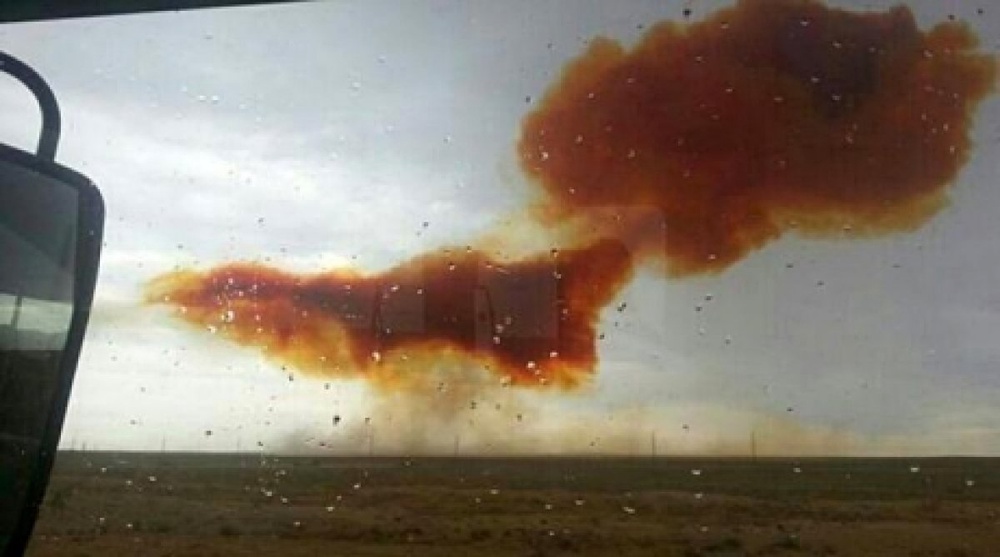
Corresponding member and analyst of Tsiolkovskiy Russian Cosmonautics Academy Yuriy Karash commented the possible consequences of the crash of Russian Proton-M at Baikonur in Kazakhstan in the interview to Kommersant newspaper. According to the expert, the spilling of hundreds of tons of heptyl over Kazakhstan is comparable to a chemical attack on the country. According to him, it is too early to talk about causes of the Proton-M crash at Baikonur on July 2: we should wait for the expert commission’s conclusions, he says. “We hope that this toxic cloud will not go outside the cosmodrome. However, I am not sure there is a way to retain this cloud within the (space center's) limits,” Karash said. According to him, the accident will not make Russia consider leaving Baikonur. The expert pointed out that Kazakhstan had tried several times to cut quotas on launches of Proton-M rocket carriers because of their ecological unfriendliness. “If Proton works normally and takes the load to the orbit, the fuel is combusted in its tanks, or, more exactly, in its engines. But when the fuel gets into Kazakhstan’s environment, it, of course, causes harm,” the expert said. According to him, the rocket crash at Baikonur involved contamination of the territory with hundreds of tons of heptyl, which may cause a significant harm. That’s why, Karash added, Russia wants to replace Proton with Angara booster that works on more environmentally-friendly fuel. Russia’s Proton-M carrier rocket [equipped with a DM-3 booster] carrying three Glonass-M navigation satellites crashed right after the lift-off at Kazakhstan-based Baikonur cosmodrome on July 2.





Corresponding member and analyst of Tsiolkovskiy Russian Cosmonautics Academy Yuriy Karash commented the possible consequences of the crash of Russian Proton-M at Baikonur in Kazakhstan in the interview to Kommersant newspaper. According to the expert, the spilling of hundreds of tons of heptyl over Kazakhstan is comparable to a chemical attack on the country.
According to him, it is too early to talk about causes of the Proton-M crash at Baikonur on July 2: we should wait for the expert commission’s conclusions, he says. “We hope that this toxic cloud will not go outside the cosmodrome. However, I am not sure there is a way to retain this cloud within the (space center's) limits,” Karash said. According to him, the accident will not make Russia consider leaving Baikonur. The expert pointed out that Kazakhstan had tried several times to cut quotas on launches of Proton-M rocket carriers because of their ecological unfriendliness.
“If Proton works normally and takes the load to the orbit, the fuel is combusted in its tanks, or, more exactly, in its engines. But when the fuel gets into Kazakhstan’s environment, it, of course, causes harm,” the expert said. According to him, the rocket crash at Baikonur involved contamination of the territory with hundreds of tons of heptyl, which may cause a significant harm. That’s why, Karash added, Russia wants to replace Proton with Angara booster that works on more environmentally-friendly fuel.
Russia’s Proton-M carrier rocket [equipped with a DM-3 booster] carrying three Glonass-M navigation satellites crashed right after the lift-off at Kazakhstan-based Baikonur cosmodrome on July 2.

 +7 (777) 001 44 99
+7 (777) 001 44 99



 Қазақша
Қазақша Русский
Русский English
English














































